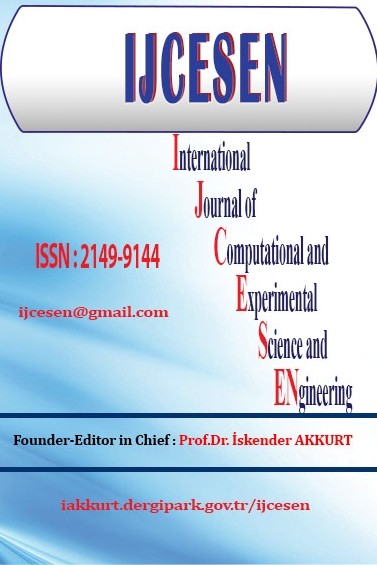Comparative Study of Non-Isolated and Isolated Bridge with TCFP Bearing Under Spatially Varying Ground Motions
Comparative Study of Non-Isolated and Isolated Bridge with TCFP Bearing Under Spatially Varying Ground Motions
Seismic isolation system Triple concave friction,
___
- [1] Zayas, V.A., Low, S.S., Mahin, S.A. and Bozzo, L. (1989), “Feasibility and Performance Studies on İmproving The Earthquake Resistance of New Existing Building Using The Friction Pendulum System” In: Report No. UCB/EERC 89-09. Berkeley (CA): Earthquake Engineering and Research Center, College of Engineering, University of California.
- [2] Fenz, D.M. (2008), Development, Implementation and Verification of Dynamic Analysis Models for Multi-Spherical Sliding Bearings. Technical Report MCEER-08-0018, Multidisciplinary Center for Earthquake Engineering Research, University at Buffalo, State University of New York, Buffalo, NY
- [3] Tajammolian, H., Khoshnoudian, F., Talaei, S., and Loghman, V., “The Effects of Peak Ground Velocity of Near-Field Ground Motions on The Seismic Responses of Base-Isolated Structures Mounted on Friction Bearings”, Earthquakes and Structures,7(6)(2014)1259-1281 DOI:10.12989/eas.2014.7.6.1259
- [4] Loghman, V. and Khoshnoudian, F., “Comparison of Seismic Behavior of Long Period SDOF Systems Mounted on Friction Isolators Under Near-Field Earthquakes”, Smart Structures and Systems,16(4)(2015)701-723 DOI:10.12989/sss.2015.16.4.701
- [5] Fallahian, M., Khoshnoudian, F., and Loghman, V., “Torsionally Seismic Behavior of Triple Concave Friction Pendulum Bearing”, Advances in Structural Engineering, 18 (12) (2015) 2151-2166 DOI:10.1260/1369-4332.18.12.2151
- [6] Harichandran, R.S., and Wang, W. (1988), “Response of One-And Two-Span Beams To Spatially Varying Seismic Excitation”, Report to the National Science Foundation MSU-ENGR-88-002. Michigan (MI): Department of Civil and Environmental Engineering, College of Engineering, Michigan State University.
- [7] Ates, S., Bayraktar, A., and Dumanoglu, A. A., “The Effect of Spatially Varying Earthquake Ground Motions on The Stochastic Response of Bridges Isolated With Friction Pendulum Systems”, Soil Dynamics and Earthquake Engineering, 26(1) (2006) 31-44 DOI:10.1016/j.soildyn.2005.08.002
- [8] Ates, S., Soyluk, K., Dumanoglu, A. A., and Bayraktar, A., “Earthquake Response of Isolated Cable-Stayed Bridges Under Spatially Varying Ground Motions”, Structural Engineering and Mechanics,31(6)(2009)639-662 DOI:10.12989/sem.2009.31.6.639
- [9] Constantinou, M.C., Kalpakidis, I., Filiatrault A. and Ecker Lay, R.A., “Lrfd-Based Analysis and Design Procedures For Bridge”, Fabruary 28 (2011), Technical Rapor.
- Yayın Aralığı: 4
- Başlangıç: 2015
- Yayıncı: Prof.Dr. İskender Akkurt
Generation of Pseudo Velocity Logs from Resistivity Logs and an Applied Example from Thrace
Serpil ERYILMAZ, Nesuhi AKDEMİR, Ersin İNKAYA
Wind Turbine Blade Design with Computational Fluid Dynamics Analysis
Continuous and Discontinuous Contact Problems of a Functionally Graded Layer
Evaluation of Rock Fall Risk in Kilis (Turkey) City by Using GIS and Remote Sensing
Mehmet Ali ÇELİK, Ali Ekber GÜLERSOY
